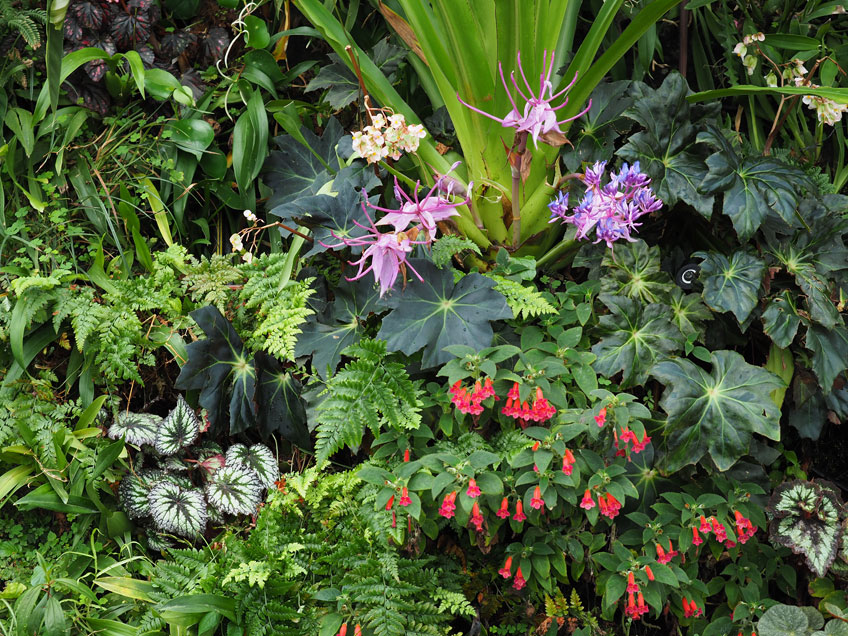That tricky shady spot can be a highlight of the garden - if you choose the right plants.
Here are a few ideas.

No sun? no problem! you can still have a colourful display even in the shade.
In the shade
Carpets of shade-loving groundcovers bring a dull place to life. Select a few plants with contrasting textures, leaf shapes and colours and group five
to seven of the same plant for the best effect. Choose from tractor seat plant (Ligularia), woodland cyclamen, Bergenia ‘Diamond Drops’ and other hybrids,
Persian shield (Strobilanthe), Brunnera ‘Jack Frost’, ‘Silver Heart’, and ‘Sea Heart’, Plectranthus ‘Mona Lavender’ and other species, and Japanese
painted ferns.
Under big trees
Only a handful of plants cope with the root competition and dry soils under mature trees. Try clivia, plectranthus, aspidistra, oyster plant (Acanthus
mollis) and shade-loving bromeliads, which grow best in mounds of cheap pine bark piled on top of the existing soil level.
The side passage
The long narrow side passage between houses or apartment blocks often get a blast of midday sun bookended by dense shade. For this difficult spot try camellia
japonica shrubs and cane-stemmed begonias, with a lower-level planting of variegated mother-in-law’s tongue (Sanseveria) and aspidistra. Add an interesting
pathway texture to draw the eye.
The shady south
That spot where the sun don’t shine is perfect for a fern glade. Plant it up with bird’s nest ferns, soft-barked tree ferns, stag and elkhorn ferns, and
painted Japanese ferns, then add native violets spilling over fallen logs and the contrasting leaf shapes of bergenia and brunnera.
Winter shade/summer sun
Where shade-lovers fry in summer and sun-lovers languish through winter consider port wine magnolia (Michelia figo), Azalea indica types, sacred bamboo
(Nandina domestica), liriope, windflowers (Anenome hupehensis var. japonica) and canna lilies which after flowering in full sun all summer go dormant
over winter. Alternatively create more summer shade by growing a tree or by building a pergola, and choose shade-loving plants.